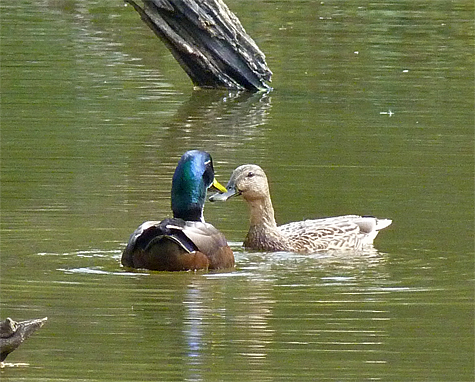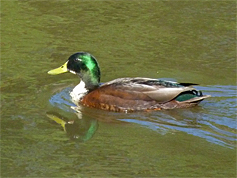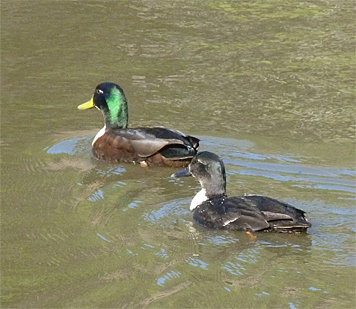Besides the hooded mergansers and buffleheads swimming around our Wetlands, an old familiar male mallard has stopped in, with a different female than I’d seen him with previously.


I know this is the same drake mallard because of his plumage, he is not pure mallard. This drake has some domestic duck mixed in. The fact is, there are probably few pure mallards in our area although their plumage may or may not appear to be purebred mallard. Mallards are the ancestors of most domestic duck breeds. They can, and do, breed with domestic ducks. The results are often confusing and colorful.
How do I know the female is a different female? The new female is more “normal” in plumage than the female our male accompanied last time he visited us.
One look at the photo below will convince you that, yes, this is indeed a different female. On his last visit, the male brought with him (or should I say, he followed into our Wetlands) a nearly all black female with a white breast.

These mallards have a reputation here at the Museum. The female above was once seen to lay an egg on the retaining wall of the Sail Boat Pond in Catch the Wind. I’ve seen the dark female tightly sitting on a nest with no eggs in it, for days! These mallards are unique and unpredictable, and I’m not surprised by any behavior they might exhibit.
By the way, the pied-billed grebe that had been in the Wetlands the past few weeks has not been seen for several days.